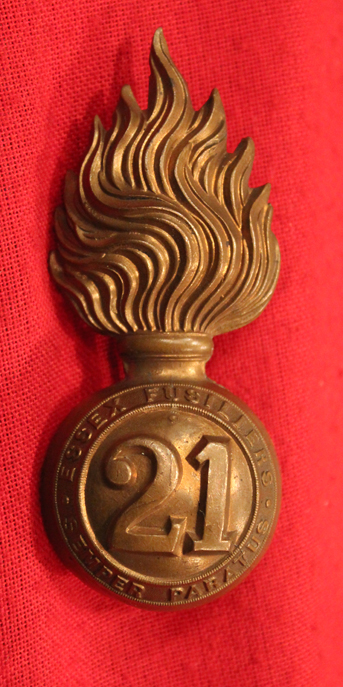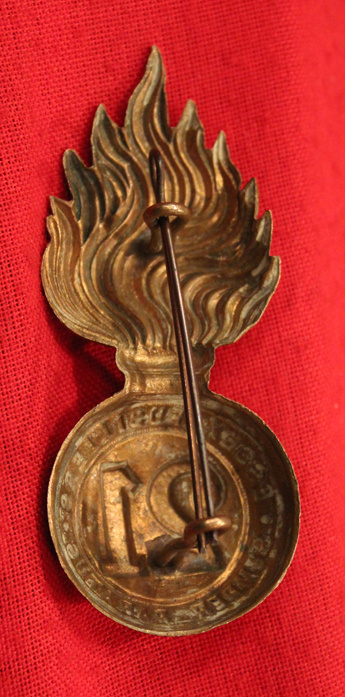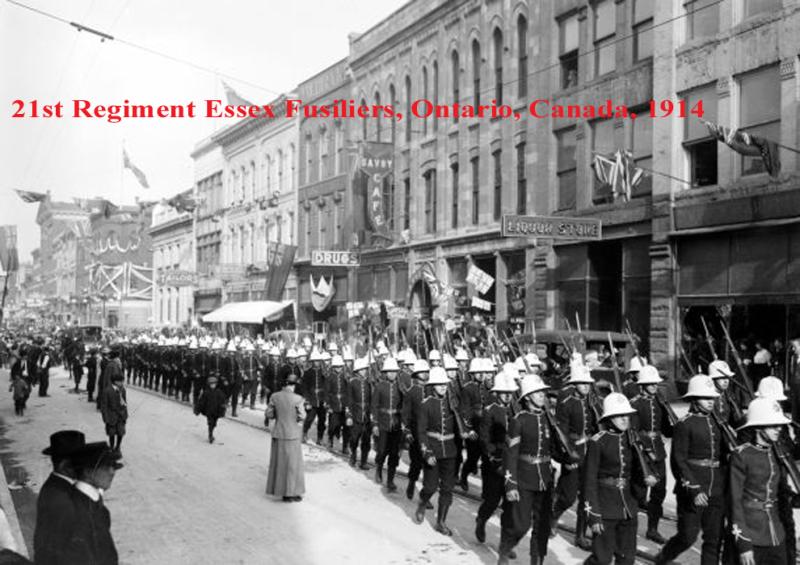21st Regiment Essex Fusiliers Large Service Helmet Flaming Grenade Badge. Circa.1887
Canadian Militia busby helmet badge. 21st Regiment Essex Fusiliers Fur Busby grenade. Circa.1887 Brass grenade with two lugs to the reverse in excellent condition.
A military presence in Windsor and Essex County dates back as far as 1701, when all men in the community were essentially militia members, armed to combat a perceived 'Indian threat'. When Irish-American Nationalists invaded Canada in 1866, even stronger forces were established locally. By 1885, local militias had amalgamated into the 21st Essex Battalion of Infantry.
By the advent of the First World War, the 21st Battalion (now known as the 21st Regiment Essex Fusiliers) was placed on active service. Initially, they contributed to Canada's 1st Battalion, upon its formation in 1914, then later the 18th Battalion (consisting largely of Essex Fusilier soldiers. The 18th Battalion served in France and Flanders from 1915 until the Armistice.
The regiment perpetuated the 18th (Western Ontario) Battalion, 99th (Essex) Battalion and 241st (Canadian Scottish Borderers) Battalion of the Canadian Expeditionary Force and held its final Order of Precedence as 40. Battle honours for the regiment include: First World War: Ypres 1915 & 17, Festubert 1915, Mount Sorrel, Somme 1916 & 18, Flers-Courcelette, Thiepval, Ancre Heights, Arras 1917 & 18, Vimy 1917, Hill 70, Passchendaele, Amiens, Scarpe 1918, Hindenburg Line, Canal du Nord, Cambrai 1918, Pursuit to Mons, France & Flanders 1915-18 Second World War: Dieppe Raid (1942), Battle of Verrigres Ridge (1944), liberation of Dieppe (1944), Battle of the Scheldt (1944), The Rhine (1944-1945), Northwestern Europe
By 1926, an alliance was formed with the Essex Regiment of the British Army, and by 1927, the Essex Scottish had adopted the MacGregor tartan based on Scottish Highland tradition. That year an alliance was also established with the Queen’s Own Royal West Kent Regiment of the British Army.
The Regiment was the first unit of men in Western Ontario to be called up during World War II and one of the first Canadian units to see battle overseas. Their first fight was the tragic Dieppe raid on August 19th, 1942 where the Regiment was hit particularly hard during Operation Jubilee. When the smoke cleared, the Regiment had lost 121, and many of the survivors were either wounded or captured. With barely enough time to regroup, the regiment prepared itself for the invasion of France. On July 5th 1944, it participated in the bloody landing at Normandy, and then fought on through France, Holland and Germany until the war's end.
By then, the regiment had suffered 552 dead and had been inflicted with the highest number of casualties of any unit in the Canadian Army-a staggering 2,510.
Code: 19898
245.00 GBP



